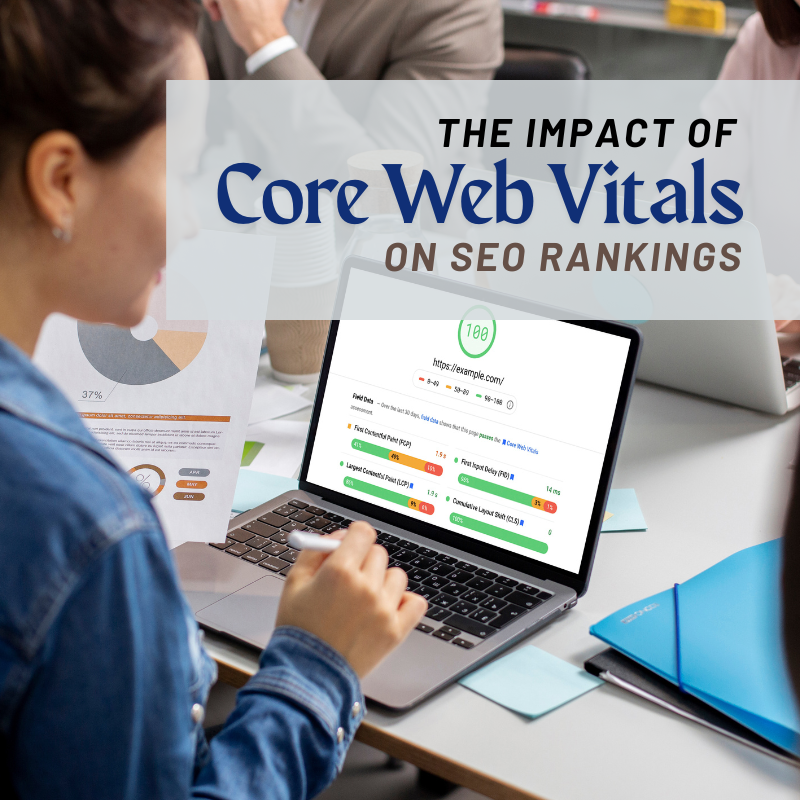The Impact of Core Web Vitals on SEO Rankings

In today’s digital world, delivering a seamless user experience is no longer optional—it’s essential. One of the key metrics that influence how your website performs in search engine rankings is Core Web Vitals, a set of specific factors introduced by Google that measure real-world user experience. Since their official rollout in 2021, Core Web Vitals have become a vital part of Google’s page experience signals, directly affecting SEO rankings.
In this blog, we’ll break down what Core Web Vitals are, how they impact your SEO performance, and provide actionable tips to optimize them for better search visibility.
What Are Core Web Vitals?
Core Web Vitals are a subset of Google’s Page Experience signals that focus on user interaction and loading performance. There are three main components:
1. Largest Contentful Paint (LCP)
Measures loading performance.
- Ideal: Under 2.5 seconds
- It tracks how long it takes for the main content of a page (e.g., hero image or large text block) to load.
2. First Input Delay (FID)
Measures interactivity.
- Ideal: Less than 100 milliseconds
- It measures how quickly the page responds to the user’s first interaction (e.g., clicking a button or link).
3. Cumulative Layout Shift (CLS)
Measures visual stability.
- Ideal: Less than 0.1
- It assesses how much the page layout shifts while loading, which can be frustrating for users.
Note: Starting in 2024, Interaction to Next Paint (INP) is set to replace FID as a more accurate measure of interactivity.
Why Core Web Vitals Matter for SEO
Google aims to provide users with the best possible experience. That’s why they’ve made Core Web Vitals a ranking factor. If two websites have equally strong content, the one offering better user experience—measured through Core Web Vitals—is more likely to rank higher.
Here’s how Core Web Vitals impact SEO:
- Improved User Experience: Sites that load quickly and are visually stable keep users engaged longer, reducing bounce rates.
- Better Rankings: Since Core Web Vitals are officially part of Google’s algorithm, they directly influence your search rankings.
- Increased Conversions: Faster and more responsive websites encourage users to take action—like making a purchase or filling out a form.
- Mobile-First Indexing: Google prioritizes mobile performance, making Core Web Vitals even more critical for mobile-friendly design.
Real-World Example
Let’s say two e-commerce websites—Site A and Site B—sell the same products at similar prices. Site A has optimized Core Web Vitals, achieving an LCP of 2.1s, FID of 80ms, and CLS of 0.05. Site B, on the other hand, has an LCP of 4.0s, FID of 200ms, and CLS of 0.25.
Even if Site B has better backlinks or more content, Site A will likely outrank Site B in search results because it offers a faster and more stable browsing experience, especially on mobile.
How to Measure Core Web Vitals
You can measure Core Web Vitals using free tools like:
- Google PageSpeed Insights
- Lighthouse (via Chrome DevTools)
- Search Console > Core Web Vitals Report
- Web Vitals Chrome Extension
These tools give detailed insights into each Core Web Vital metric and suggest areas for improvement.
Tips to Improve Core Web Vitals
✅ Optimize LCP
- Use fast hosting and CDN services
- Minimize render-blocking resources (JavaScript/CSS)
- Compress and properly size images
- Lazy-load below-the-fold content
✅ Reduce FID (or INP)
- Minimize JavaScript execution
- Break long tasks into smaller, asynchronous chunks
- Use browser caching
✅ Improve CLS
- Always include size attributes for images and videos
- Avoid inserting content above existing content
- Use CSS animations instead of layout shifts
Core Web Vitals are more than just technical metrics—they’re a direct reflection of how users experience your website. By prioritizing them, you’re not only aligning with Google’s SEO standards but also improving user satisfaction and conversions.
As search engines continue to evolve, delivering fast, responsive, and stable websites is no longer just a competitive edge—it’s a necessity.
Start optimizing your Core Web Vitals today to future-proof your SEO strategy and stay ahead in the rankings.




